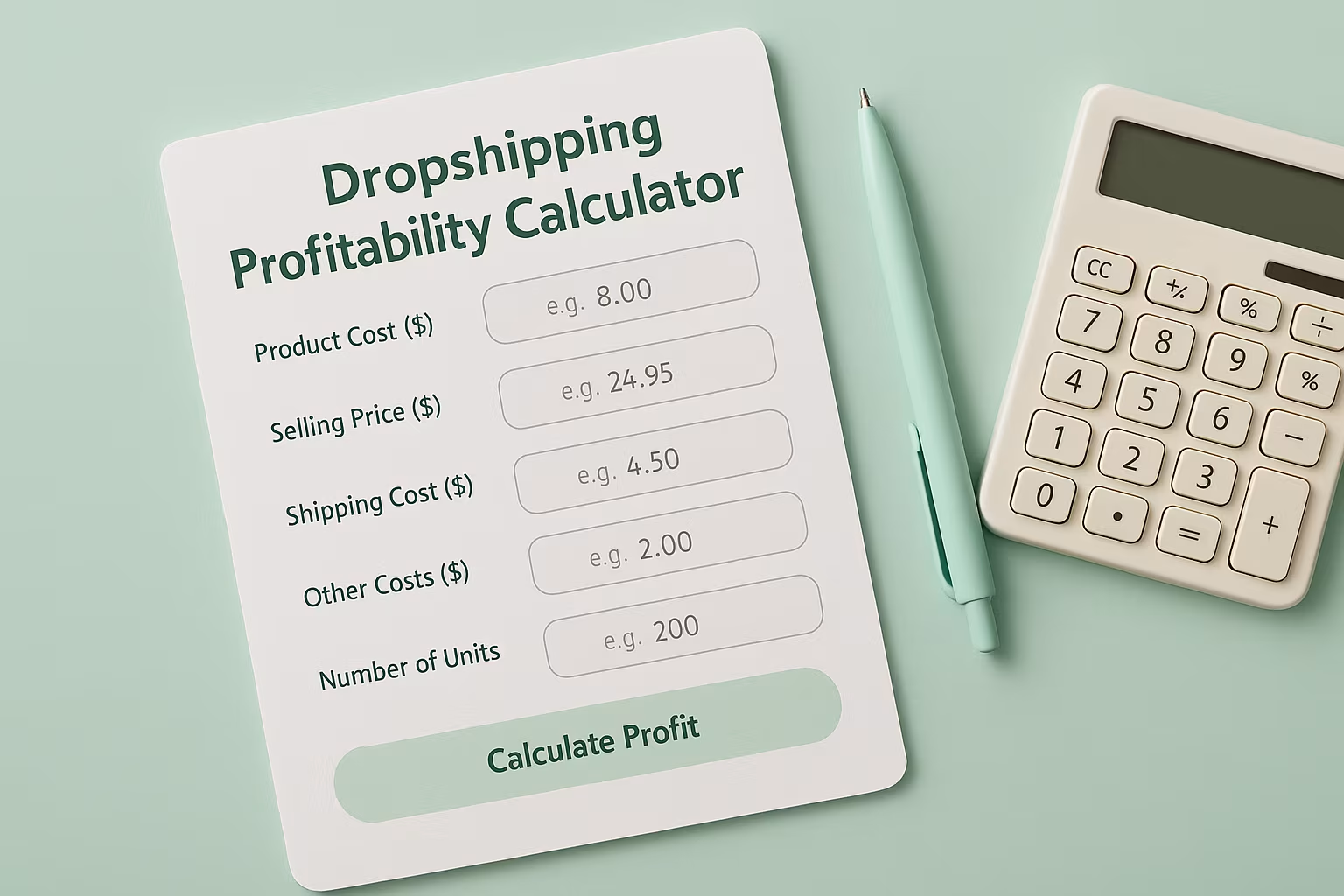Logistics ROI Calculator: Uncover the True Value of Your Fulfillment Strategy
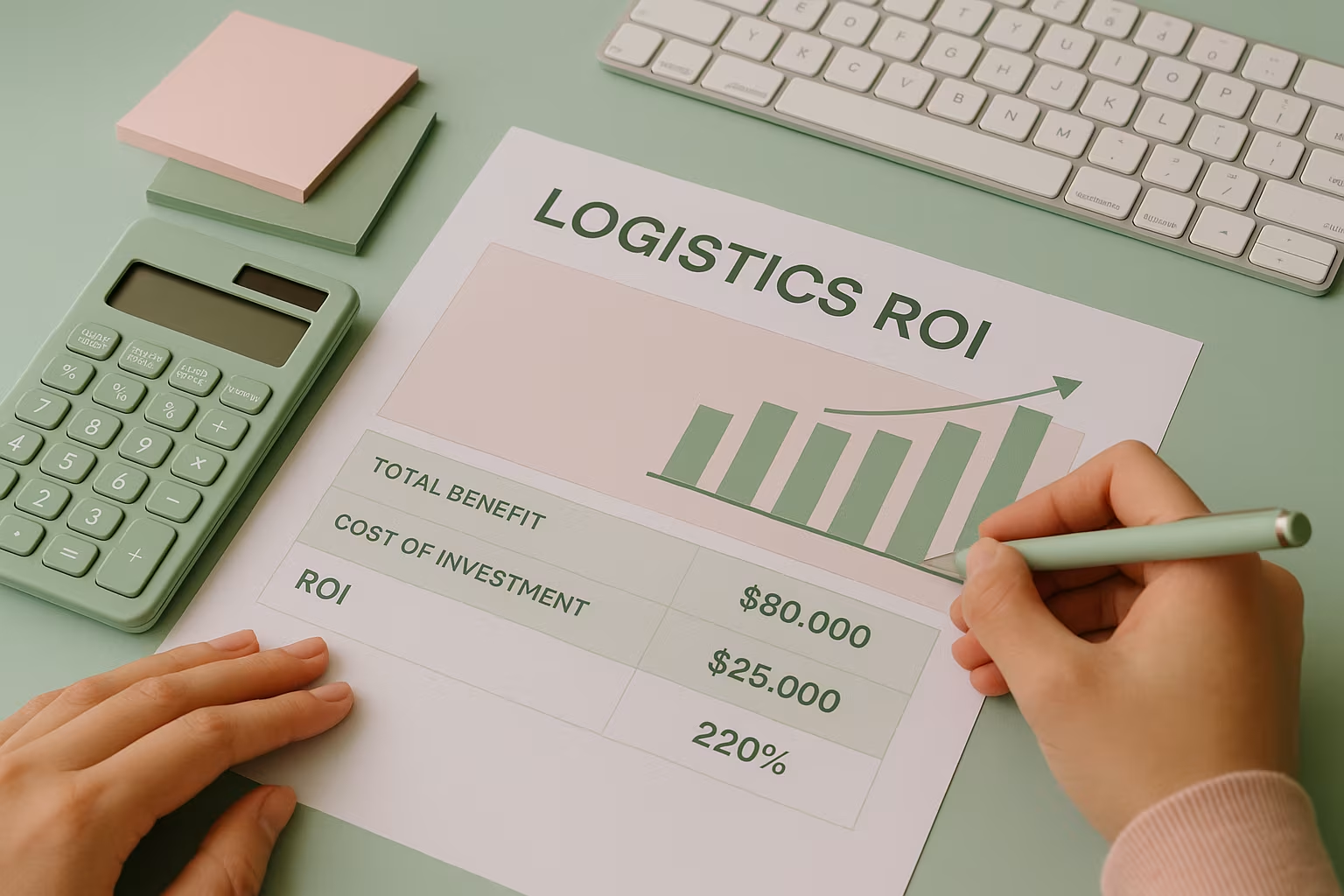
Our Logistics ROI Calculator helps you uncover exactly where your shipping dollars are going and what you could be saving.
Whether you're scaling your brand, evaluating fulfillment options, or trying to boost profit margins, this tool delivers a fast, data-driven breakdown of your current logistics performance.
Run the numbers before you scale. Make smarter, more profitable decisions for your e-commerce business.
Behind the Numbers: A Closer Look at the Logistics ROI Calculator Fields
If you're wondering what goes into calculating logistics ROI, here's a quick breakdown of each field:
1. Annual Shipment Volume
The total number of orders or packages your business ships in a year. This helps calculate the scale of your logistics spend and the potential impact of savings.
Example:
- Monthly order volume: 2,000 shipments
- Annualized volume: 2,000 × 12 = 24,000 shipments
- Fulfillment model: Direct-to-consumer supplement brand using parcel shipping
2. Average Cost per Shipment ($)
The full cost of shipping and fulfilling a single order. This includes carrier fees, packaging materials, fuel surcharges, warehouse handling labor, and more.
Example:
- Carrier shipping rate: $9.00
- Packaging and materials: $2.50
- Handling labor: $4.50
- Total cost per shipment: $16.00
3. Estimated Freight Savings (%)
The percentage reduction you expect in freight costs by switching carriers, consolidating shipments, or adopting zone skipping or automation.
Example:
- Current cost per shipment: $16.00
- Projected cost after using a regional carrier: $13.50
- Savings per shipment: $2.50
- Freight savings: (2.50 ÷ 16.00) × 100 = 15.6%
4. Labor Hours Saved per Week
Manual logistics tasks like printing labels, packing boxes, managing returns, and updating tracking info consume staff time. Automation reduces that.
Example:
- Manual label creation: 5 hrs/week
- Manual tracking updates: 4 hrs/week
- In-house returns processing: 6 hrs/week
- Weekly hours saved with automation: 15 hrs
5. Hourly Rate of Logistics Staff ($)
This is the average cost (including wages, benefits, and overhead) for warehouse, fulfillment, or operations staff whose workload will be reduced.
Example:
- Base wage: $22/hour
- Overhead + benefits: $6/hour
- Effective hourly rate: $28/hour
6. Process Efficiency Gain (%)
Represents soft savings from better processes, fewer errors, improved workflows, and faster cycle times. These gains might not be seen on invoices, but they improve throughput and reduce bottlenecks.
Example:
- Current logistics spend: $384,000/year
- Workflow and accuracy improvements are expected to reduce rework and slowdowns by 4%
- Efficiency savings: $384,000 × 0.04 = $15,360/year
7. Software/TMS Implementation Cost ($)
The total upfront or annual cost to adopt a Transportation Management System (TMS), warehouse software, or to onboard a new 3PL partner.
Example:
- Logistics software subscription: $12,000/year
- Implementation/onboarding: $5,000 (one-time)
- Staff training and setup costs: $3,000
- Total Year 1 cost: $20,000
Once you input all fields and calculate, you’ll receive:
- Freight Savings
- Labor Savings
- Efficiency Savings
- Total Annual Savings
- ROI % and Payback Period
This output helps you decide whether it’s time to upgrade your logistics stack or switch fulfillment strategies, with full financial clarity. Let me know if you’d like a condensed version too.
What the Logistics ROI Calculator Helps You Solve

Most ecommerce brands underestimate how much their logistics costs are eating into their bottom line. From inefficient shipping methods to bloated 3PL contracts, hidden fees, and outdated systems can quietly erode your profit margins.
The Logistics ROI Calculator helps you evaluate whether your logistics investments, like switching fulfillment partners or upgrading your tech stack, are delivering returns.
It allows you to:
- Input your logistics spend and expected savings
- Account for labor, technology, and transportation costs
- Estimate annualized ROI from potential improvements
- Compare cost-saving scenarios side by side
No guesswork, no spreadsheets, just a clear view of what’s working, what’s not, and what’s worth investing in to scale your brand smarter.
Interpreting Your Results: What Is a Healthy Logistics ROI?
Understanding your ROI isn’t just about seeing a positive percentage; it’s about knowing whether the return justifies the investment and risk. Here’s a general framework for interpreting your logistics ROI:
- Excellent ROI: 200%+
This means you’re seeing major operational savings, quick payback, and a strong case for reinvestment or scaling. - Good ROI: 100–199%
You’re getting double your investment back, showing that your logistics setup or tech solution is delivering real value. - Moderate ROI: 30–99%
Solid performance, especially if you’re also gaining soft returns like faster fulfillment, improved accuracy, or better customer experience. - Low ROI: Under 30%
A red flag that your costs may be outweighing your benefits, or that hidden inefficiencies are dragging down performance.
Industry Context Matters:
Not all logistics ROI is created equal. Your results will vary depending on your business model, order volume, and fulfillment setup. What looks like a modest return for one brand might be a smart, strategic win for another.
- Parcel-heavy eCommerce brands may see lower ROI due to fixed carrier contracts but still benefit from time and accuracy improvements.
- High-volume shippers or 3PL users often unlock stronger ROI with software-led routing and automation.
- Enterprise retailers can justify 6-figure investments if payback occurs within 6–12 months.
Bottom Line:
If your Logistics ROI is underwhelming, explore alternative providers, tech solutions, or revisit assumptions around labor hours and efficiency gains. The calculator gives you a starting point, but optimizing logistics is an ongoing process.
6 Ways to Improve Your Logistics ROI Immediately
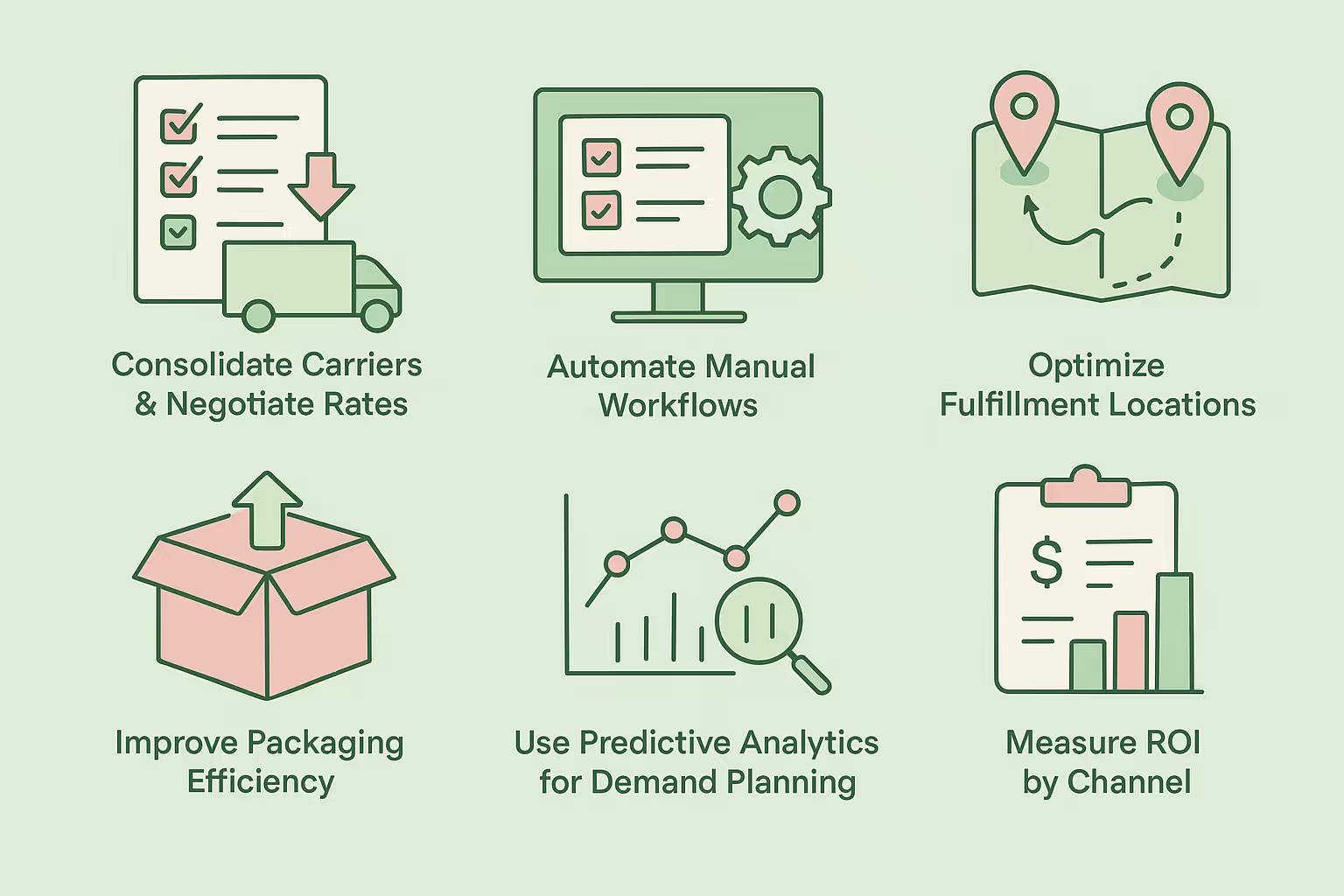
Maximizing your logistics ROI isn’t just about cutting costs; it’s about running a smarter, more scalable ecommerce operation.
Whether you're launching your first product or optimizing a growing Shopify store, these strategies help you get more out of every dollar spent on fulfillment.
1. Consolidate Carriers & Negotiate Rates
If you're shipping through multiple carriers or small local options, you're likely missing out on volume-based discounts. Consolidate under a single provider and renegotiate rates once you hit key order thresholds.
Example: Switching to a national carrier with a tiered contract can save 8–15% on freight.
2. Automate Manual Workflows
Manual order handling slows growth. Tools like Shopify-integrated fulfillment systems or a built-in TMS automate tasks like label generation, tracking, and order syncing, so you spend less time on backend work.
Example: Saving 10 labor hours per week at $30/hr = $15,600 in annual savings.
3. Optimize Fulfillment Locations
Relying on one fulfillment center? That can drive up last-mile delivery costs. With multi-location fulfillment, you can place inventory closer to customers and reduce shipping times.
Example: Splitting inventory between the East and West Coasts can reduce average delivery cost by $2 per order.
4. Improve Packaging Efficiency
Oversized boxes mean wasted space and higher DIM weight fees. Customize packaging to fit your SKUs, especially for supplements, powders, or drink mixes, to reduce excess costs.
Example: Reducing box size by 2 inches can cut carrier fees by 10% across thousands of shipments.
5. Use Predictive Analytics for Demand Planning
For e-commerce, stock accuracy is king. Use predictive tools or inventory analytics to avoid stockouts, limit deadstock, and reduce storage fees.
Example: Reducing deadstock by 15% can free up $25,000+ in annual warehouse costs.
6. Measure ROI by Channel
Not all fulfillment costs are equal across platforms. Analyze logistics ROI for each channel, Shopify, Amazon, TikTok Shop, or wholesale, to identify which one scales best with your current setup.
Example: Shopify may be more profitable despite lower volume if 3PL fees are lower and you retain more customer data.
Expert Logistics ROI Tactics Most Brands Overlook
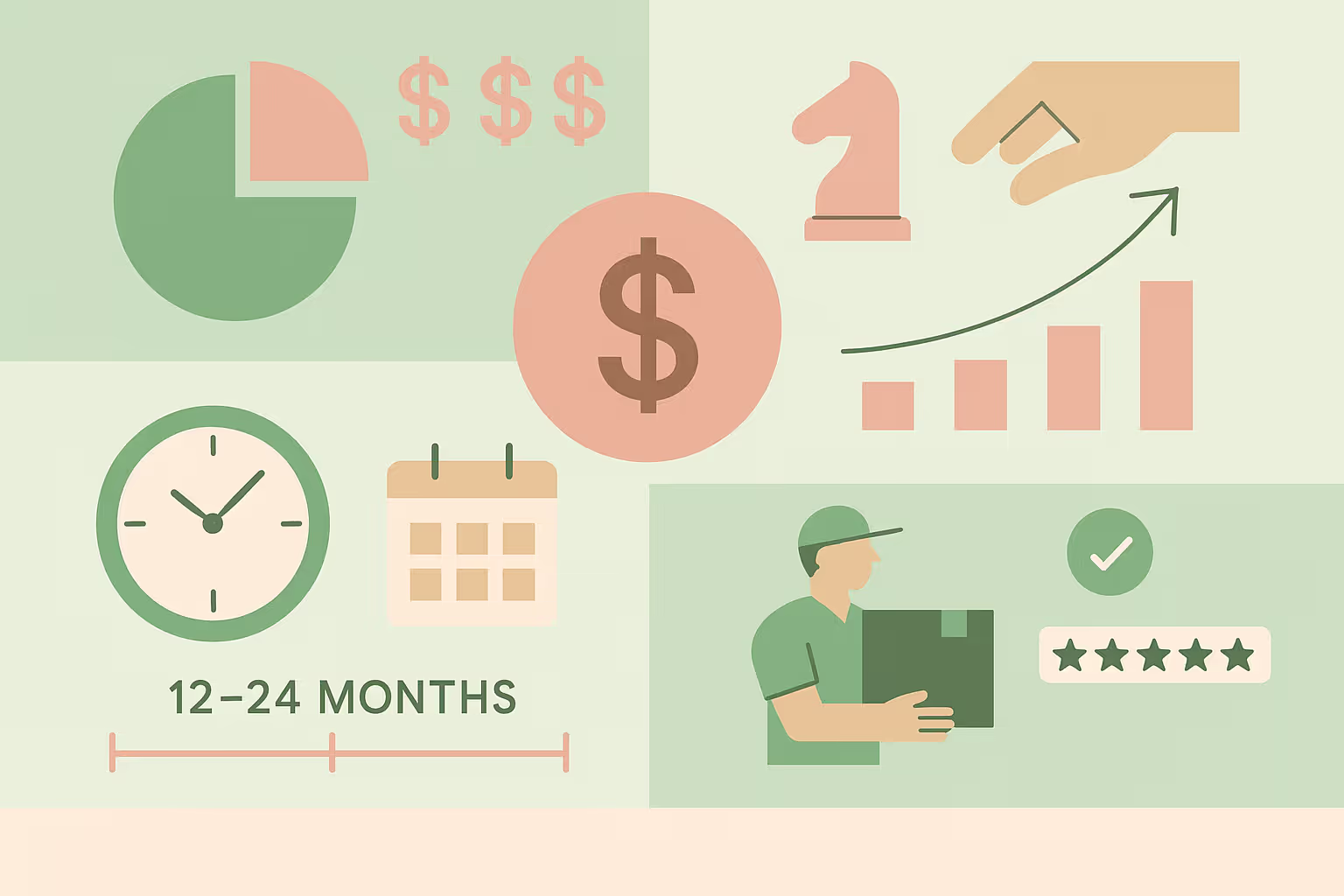
Even well-optimized fulfillment setups can leave money on the table. These advanced tactics go beyond surface-level cost-cutting to help you uncover hidden inefficiencies, sharpen your logistics strategy, and increase ROI where it really counts.
1. Focus on Net Logistics ROI by Channel
Not all channels are created equal. It’s easy to measure logistics performance in aggregate, but savvy operators track ROI per channel (e.g., Amazon, Shopify, B2B).
Why it matters: Amazon’s 15% referral fee + FBA charges may shrink your margin, even if revenue is high. Meanwhile, Shopify DTC orders might yield a better ROI after ad spend.
Pro move: Set a minimum ROI threshold per channel and use the calculator to model per-order logistics impact.
2. Include the Opportunity Cost of Manual Tasks
Measuring labor cost is one thing, but don’t forget the opportunity cost of tying up your logistics team with outdated workflows.
Example: 12 hours/week spent manually booking shipments = 624 hours/year that could be used for customer service or strategic planning.
Pro move: Calculate both hard savings and soft gains from freeing up internal bandwidth.
3. Calculate ROI Over a 12–24 Month Horizon
Many teams stop at first-year savings, but high-ticket implementations like TMS platforms often compound their ROI over time.
Pro move: Use a rolling ROI view that incorporates scale, freight renegotiations, or labor savings over 2+ years.
4. Model the ROI of Avoided Risk
Late shipments, lost packages, and missed dock appointments don’t just hurt service; they impact cost.
Example: A missed delivery window may lead to fines or lost retail slots.
Pro move: Assign a dollar value to avoided service failures and factor this into your total return.
5. Don’t Ignore ROI from Customer Experience Gains
Faster fulfillment and accurate tracking can increase repeat purchase rates.
Example: A 3% boost in repeat orders may not show in logistics line items, but it increases total customer value.
Pro move: Pair logistics ROI with LTV improvement metrics to make a stronger investment case.
Use ROI to Drive Smarter Logistics Decisions
ROI isn’t just a finance metric; it’s how modern ecommerce brands make better decisions. Whether you’re launching your first product or scaling your private-label line, understanding logistics ROI helps you focus on what grows your margins.
The Logistics ROI Calculator is built for creators, founders, and lean ecommerce teams who want to scale without guesswork. Use it to evaluate new fulfillment partners, test out warehousing changes, or see if automation is worth the upgrade.
It’s how you make every dollar in your supply chain work harder, move faster, and grow with you.
Try it now, and turn logistics into a profit driver, not a cost center.
FAQ
Related blogs
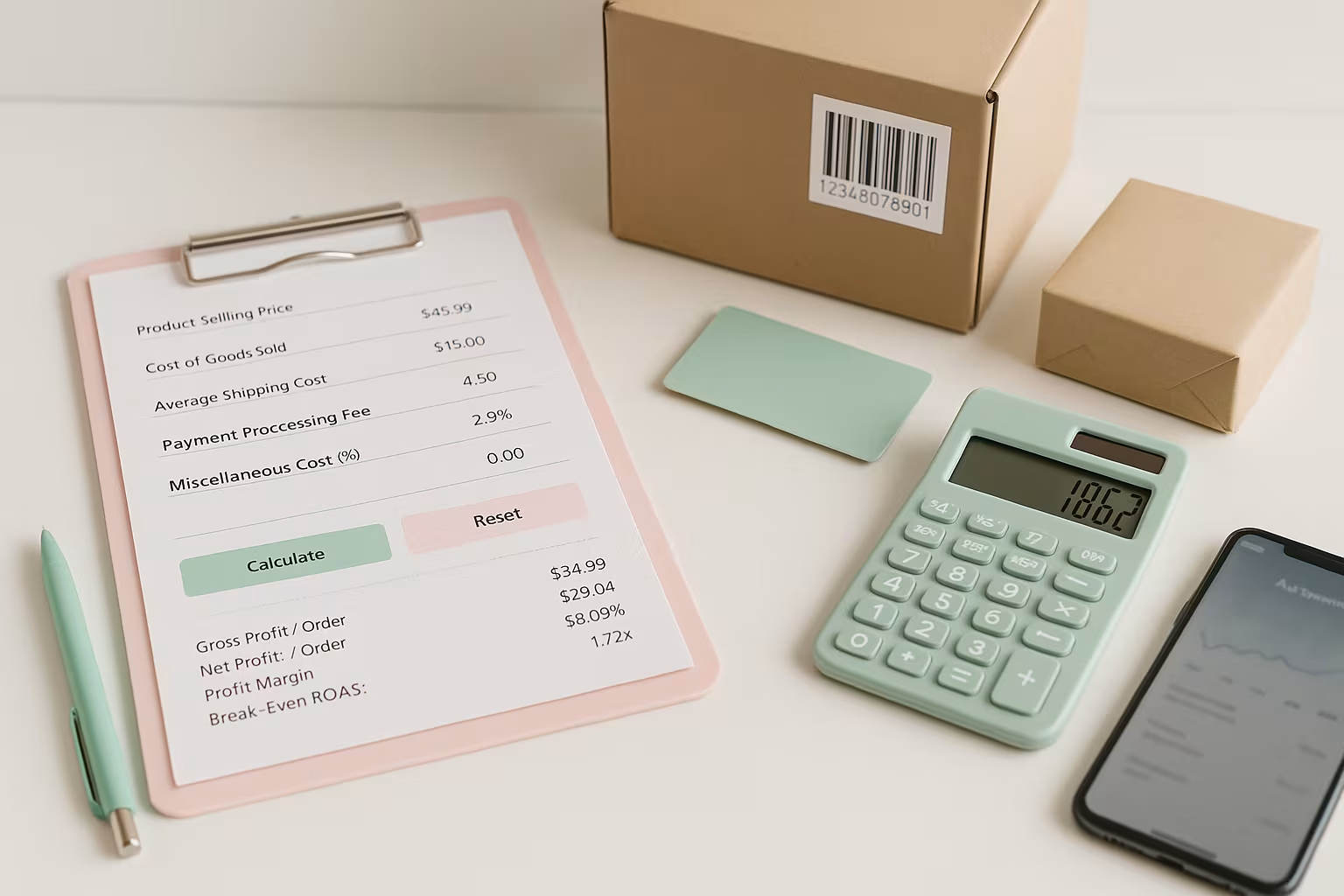
Break-Even ROAS Calculator: Find Out What You Can Afford to Spend on Ads
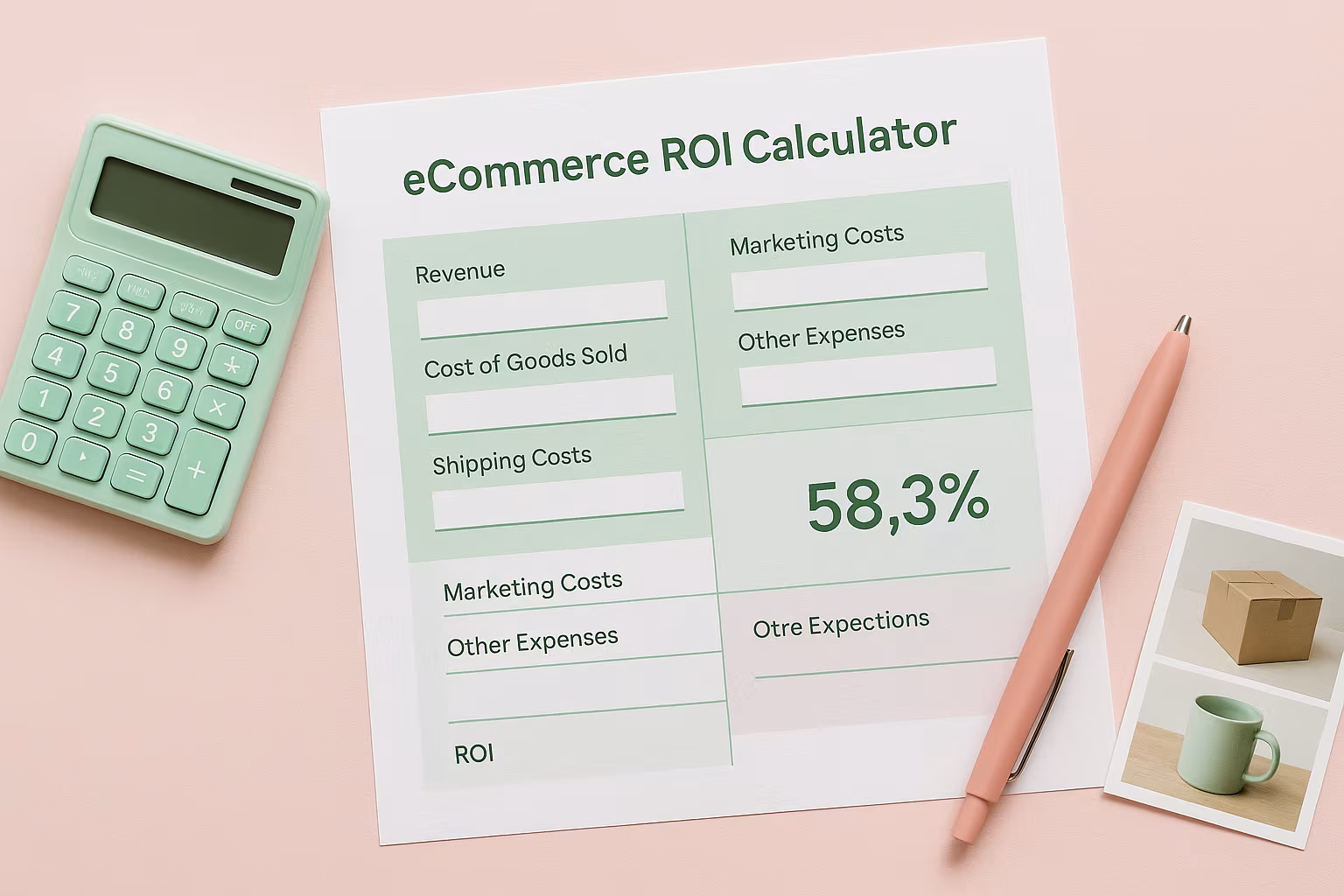
Ecommerce ROI Calculator: Scale Your Store

Customer Lifetime Value Calculator: Unlock Your E-commerce Revenue Potential
